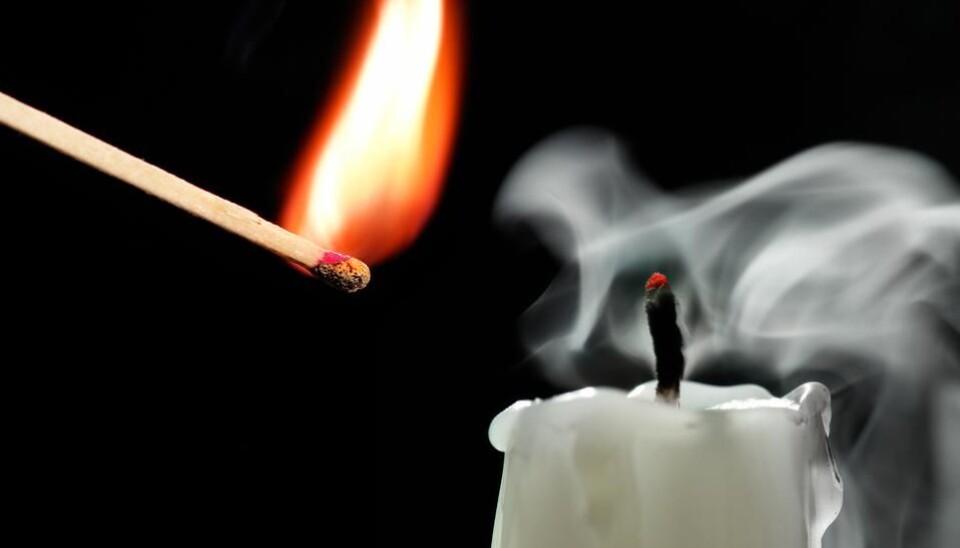
Our homes are filled with soot nanoparticles from candle flames
Cozy candles and sizzling pans make Danish homes as polluted as a typical Beijing apartment, new study finds.
Burning candles and cooking meals raises the nanoparticle count in Copenhagen homes all the way up to Beijing levels.
Danish scientists have now shown that soot from candle lights and kitchen activities is the largest source of indoor pollution of ultrafine particles (UFPs) – nanoparticles so tiny that they can penetrate lung tissue.
Burning a candle light for two hours a day contributes to almost two-thirds of the total indoor UFP pollution in Denmark.
”Compared to other studies, the total exposure to these particles in Danish homes is higher than the average,” says Gabriel Bekö, an associate professor at the Technical University of Denmark, who is the lead author of the new study, published in the journal Environmental Science and Technology.
“But remove the candle lights from the equation and it’s very similar,” he adds.
UFP health risk is debated but previous studies have shown that the minuscule particles are more effective at irritating the body’s defences than normal-sized particles, according to co-author Steffen Loft, a professor of environmental medicine at Copenhagen University.
Simultaneous health studies will ascertain UFP risk
To find out how polluted our homes are, Bekö placed particle counters in the living rooms of 56 Copenhagen homes. Residents would write down daily activities in the house, enabling the researchers to deduce sources of sudden spikes in particle activity.
Meanwhile, Loft was conducting a study of his own; testing the residents’ health and lung functions.
“Very little is known about indoor particles but this study will hopefully let us determine if there is a link between UFPs and health problems,” says Loft, who expects to have the results ready later this year.
Candles greatest source of nanoparticles
While Loft’s study will ascertain if UFPs pose a health risk, Bekö has shed light on the greatest particle contaminants.
Candles were by far the worst, and 28 of the 56 homes lit one or more during the two-day experiment. Burning for an average of 140 minutes, they contributed to 58 percent of the total indoor UFP pollution in these homes.
Cooking contributed to 30 percent of UFP pollution in 37 of the homes and toasting was documented in 12 homes where it accounted for 11 percent.
Even though most of the homes were situated between 50-250 metres from trafficked roads, open windows did not increase the total UFP amount by more than a further three percent, demonstrating that indoor pollution stems from indoor activities.
“Our indoor UFP levels are close to those in Beijing apartments but the pollution sources are completely reversed,” says Bekö, explaining that 70 percent of all UFPs in Beijing are from outdoor sources while in Denmark it’s the other way around.
Blow the candle until health risk is known
Bekö and Loft are already analysing data from their follow-up study. This time around they gave participants a second particle counter to carry around during the day.
“We don’t know how many UFPs people are exposed to on their way to or from work, so this way we can isolate the home from the total daily exposure,” says Bekö, adding that indoor pollution most likely isn’t more than a fraction of the total daily UFP dose.
While we wait for the results, Loft suggests we don’t play with fire in the meantime.
“As long as we don’t know if particles from candle lights are less dangerous than other particles, it would make sense to really consider if it’s wise to burn candles as often as we do.”
---------------------
Read the Danish version of this article at videnskab.dk
Translated by: Kristian Secher










